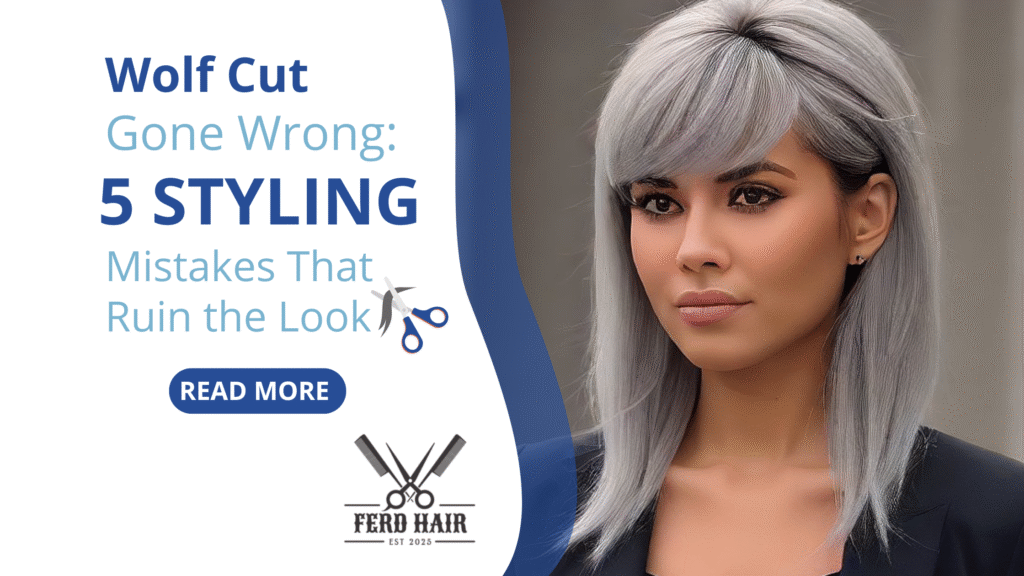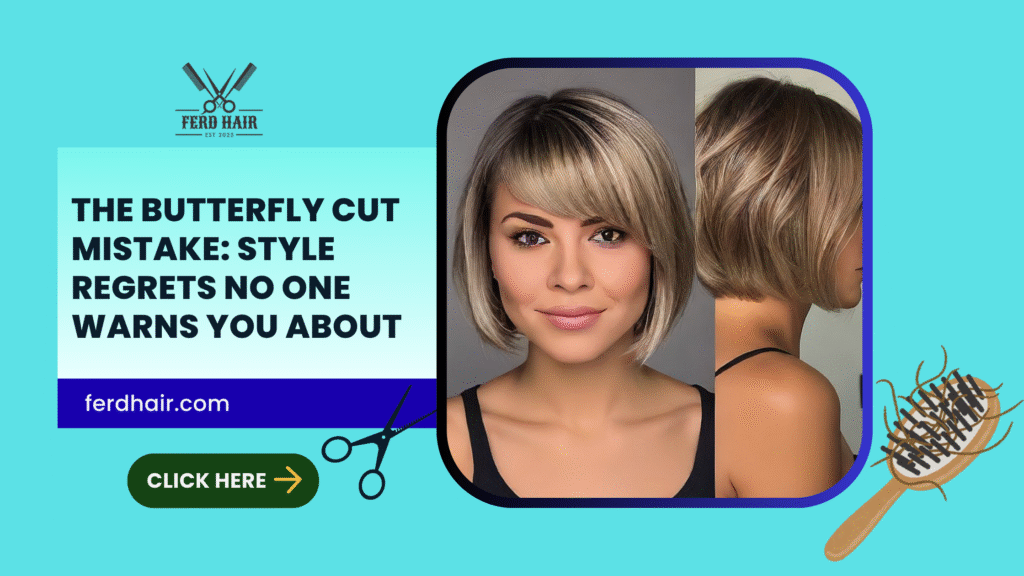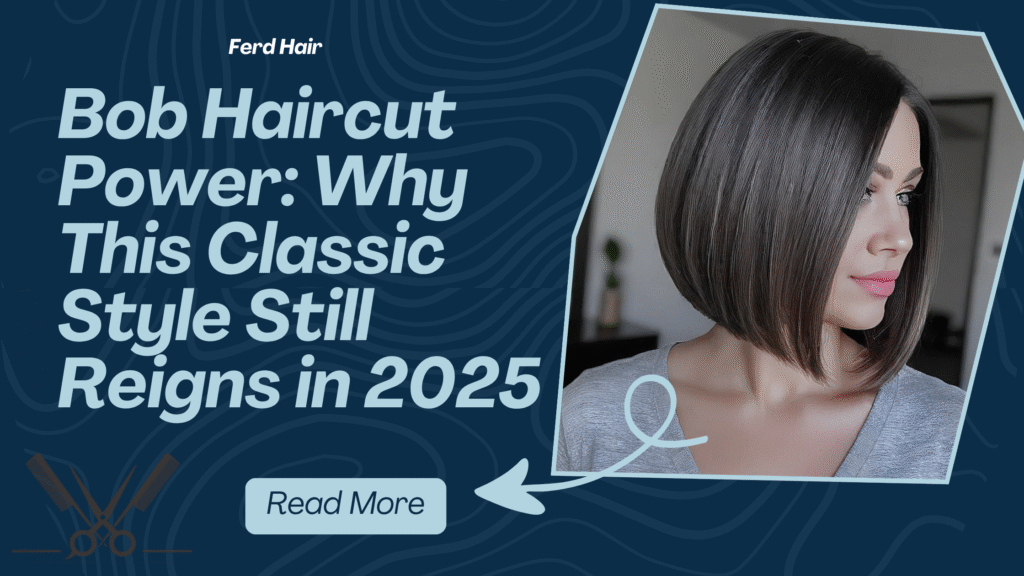Table of Contents
Introduction: Why the Wolf Cut Can Go from Iconic to Irritating
Wolf cut has swept the globe due to the fact that it is a mix between the cool of the shag and the free-spirited volumetric nature of a mullet. It is daring, reckless and exclaims personality, hence one of the highly demanded styles in hair salons and all over TikTok.. However, although having this viral appearance might be perceived to be easily achievable, there is nothing stopping it from being done incorrectly.
Performed incorrectly, however, the wolf cut can soon become from ferocious to outright frustrating. Improper selection of layers, style, or cuts can make you end up with something more awkward than glamorous. You may be thinking about getting a wolf cut or attempting to salvage one that did not turn out so well; either way, knowing what not to do is as useful as knowing what does work.
So to help you achieve the fresh and layered wolf cut you truly desire, in this guide, we are going to simplify five of the most common styling errors that can destroy a wolf cut and show you how to avoid them.

What Is a Wolf Cut and Why Is It So Popular?
Wolf cut is an anti-establishment combination of two famous styles, shag and mullet. The wolf cut is defined by heavy and choppy layers at the crown and longer pieces at the base bed that produce a sense of volume on top, complete with a messily chic, wild finish. The effect its unorganized look is intended to have is edgy and undone.
The wolf cut does not work on a classic layered cut: it is all about the contrast. The top is fat and ruffled, with ends of the hair being tapered off to give it a slightly out-of-touch rockstar feel. It is meant to provide form, posture, and action–and not too smooth.
What has made the wolf cut so massively popular, then?
It’s TikTok-Approved
The trend toward the wolf cut has been boosted on social media, such as TikTok and Instagram. It has been adopted by influencers, beauty makers, and even celebrities as one part of the nostalgic yet modern statement.
It Works on Multiple Hair Types
The wolf cut can be adjusted to suit your type of hair, either straight, wavy or curly hair. It gives fullness to the fine hair and it de-volumes the thicker strands using effective placement of the layers.
It’s Gender-Neutral and Customizable
Flexibility is one of the greatest attributes of the wolf cut. It fits a variety of face shapes and individual styles. The look can be transformed between soft and subtle, to bold and punk-inspired, depending on the individual expression.
It’s Low-Effort—But High-Impact
And the semi-wild, lived-in means that you do not have to form it masterfully every morning. Some natural texture or a smoothing of the product is all it takes to give the wolf cut a life of its own.
As much as it is friendly, however, the wolf cut is not infallible. A single misstep can cause the perfect look to go off, be it a bad layering issue, fashion styling, or the wrong cut, depending on your hair type. This is why it is important to realize the most widespread mistakes that people can make with this trend.
Check Out : http://Slick Back Revival: Why This Sleek Trend Is Dominating 2025
Mistake: Choosing a Wolf Cut That Doesn’t Suit Your Hair Type
It is so because one of the most notable causes of a failed wolf cut is as follows it is inappropriate for your usual hair type. Although the wolf cut is considered versatile, it does not fit every single case, so trying it on the wrong texture will result in an unflattering or uneven styling, or even something that is impossible to maintain.
Why Hair Type Matters
The identifiable silhouette of the wolf cut is based on clever layering and volume. The top-heavy structure can flatten or appear limp when you have too fine hair or pin-straight hair. By contrast, thick or curly hair may find that excessive choppy layers add numbing weight or frizz, and you end up with a poufy triangle where your hip new haircut should be.
How Different Hair Types React:
- Fine or Thin Hair: This can be so thin it lacks the bulk to hold the voluminous crown and will make the cut appear lifeless or stringy.
- Thick or Coarse Hair: When it is not well layered, it comes across as too bulky and heavy.
- Wavy or Curly Hair: It will take a wolf cut, but they work best with soft layering; otherwise, there is a risk of ending up too choppy or random.
- Straight Hair: It best responds to texturizing and volume-creating methods, so it would not look too flat or sharp.
Pro Tip: Customize, Don’t Copy
You may be tempted to use a celebrity photo and request the same image, but imitating a wolf cut without taking note of your hair texture will be a quick voyage into unattainable expectations. Rather, make an appointment with your stylist and adjust the wolf cut to your hair type and density. This will make sure that there is an improvement in your actual features rather than a fight with it.

Mistake: Neglecting Regular Maintenance
Although the wolf cut can be messy and relaxed, it does not mean that it is low-maintenance. The most popular misconception about a wolf cut after people get it is that they could simply forget about any maintenance time and watch the hair slowly grow back. As a matter of fact, any lack of proper maintenance may soon translate into an untidy and uncontrolled appearance, or in short, into shapeless, uneven, or frizzy tangles.
Why Maintenance Matters
The layering of the actual shape forms the foundation of a wolf cut. Those layers may lose definition as your hair grows and become out of balance. What may have been a volume, edgy style can begin to look like a long overgrown mullet, with no more than that, a haircut that has no purpose
Each time you miss a trim or neglect that changing texture, the style is more difficult to handle, more of a time-consuming chore to style, and much less pretty.
What Happens Without Maintenance:
- Layers blend together and lose contrast
- The crown becomes flat while the ends grow bulky
- Styling takes longer, and results become inconsistent
- Split ends and uneven growth compromise the cut’s overall shape
How Often Should You Maintain a Wolf Cut?
To most human beings, it is best to have a touch-up every 6 to 8 weeks to maintain the shape. Not a total cut every time, usually a little trim so the layers are refreshed and dead ends are taken out.
Pro Maintenance Tips:
- Schedule regular trims with a stylist familiar with layered cuts
- Use volumizing and/or texturing products in between appointments to create more volume and texture
- To avoid dryness and frizziness, especially in wavy or curly hair, deep-condition once a week
- Use dry texturizing sprays/light texturizing creams to recreate layers
The wolf cut does well when looked after properly, not when neglected. A regular maintenance regime will retain the bold form and cool vibe that the wolf cut was so attractive to begin with.

Conclusion: Avoid These Mistakes for a Flawless Wolf Cut
Wolf cut is a show-off, trendy, and full of character, just in case done properly. Everything counts, whether it is deciding on a cut suited to your hair type to the layers, as you want to look after the layers. Although popular, these five hairstyling errors can be easy to break down the whole impression and make you end up feeling frustrated rather than secure.
In case you want to wear such a trendy style, it does not mean following the hype. Spend some time getting to know how the wolf cut fits your hair and the shape of your face, as well as your routine. And, in case someone already has a bad experience with a wolf cut, one should not get nervous, because the majority can be corrected with the help of proper advice and the right hairdresser.
What do you need to rock the wolf cut? Sound decisions, tempered expectations, and regular attention. Mr Prix from Ghent 190; on re-reading it had become to me the classic of its genre.
For More Info: Click Here
FAQS
Can a wolf cut work on curly or coily hair?
The wolf cut is a great idea on curly or coily hair, yes, but it needs careful layering to prevent frizz and amplified volume. It should be done by the stylist, who knows how curls can be shaped and the definition retained.
How do I style a wolf cut daily without heat tools?
The layers may be defined by air drying with a diffuser or lightweight texturizing spray or scrunching with mousse. The wolf cut is a style that is meant to appear good with natural texture; hence, low-heat styling is good to go with most forms of hair types.
What should I do if my wolf cut grows out unevenly?
And when light does come off, or your wolf cut begins to look uneven or unshapely, make a light reshaping appointment. Using a stylist, there is a chance to work on the layers and stabilize them without dramatically reducing the length.



